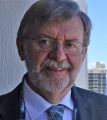YOUTUBE VIDEO: “A simple challenge to a municipal councillor or regional board member is: Why would you take on another unfunded liability called drainage – which is what you have been doing for a lifetime!,” stated Kim Stephens, keynote speaker at the Nanaimo Water Stewardship Symposium (April 2018)

“An educational goal is that those who are involved in municipal land use and drainage would understand the vision for ‘Sustainable Watershed Systems, through Asset Management’. It is an educational goal. Part of that is the paradigm-shift to recognize watersheds as infrastructure assets,” stated Kim Stephens. “The significance there is that people in local government get it, in terms of whether you use the word deficit or liability, that we don’t have the money to refinance or replace our existing core infrastructure such as water, sewer or roads.”










